
A new and distinctive hotel showcasing the rich cultural heritage of the Al Ula region in Saudi Arabia has opened its doors to guests. Managed by the Curtin Group, the "Dar Tantoura Hotel" is situated in the heart of the ancient city of Al Ula, serving as a gateway to the historical and artistic wonders of the region.With its traditional and authentic architecture, the Dar Tantoura Hotel offers guests a unique experience of the region's history and culture.Featuring 94 luxurious accommodations, including suites and private villas, the hotel provides a serene and pleasant space for relaxation and rejuvenation. Combining traditional architecture, modern amenities, and an ideal location, this hotel delivers a memorable experience for its guests.
Create: Feb 28, 2024 Edit: Feb 28, 2024 International News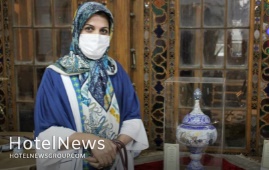
Arabian, who is a master of metalwork and Minakari (enamel), participated in the event with one of her exquisite works, a lavishly-decorated metal bowl designed for serving gaz (nougats with pistachios and almonds), CHTN quoted Vida Tavahodi as saying on Friday. Minakari is an ancient art of painting natural motifs such as flowers and birds on the surface of metals, mostly copper. Due to the outbreak of the coronavirus, the event was held virtually in India, but the artist will soon be awarded the prize at a ceremony, the official added. The award for the Male Craftsperson of the Year went to Dalavayi Kullayappa from India, while Zohra Said from Morocco and Ismael Arturo Rodriguez Moreno from Mexico named Female Craft Designer of the Year and Male Craft Designer of the Year respectively. ICA is organized by Craft Village, a social organization, based out of New Delhi, India, working towards training and promotion of handicrafts. ICA sets a new benchmark in the world with the highest level of skill and design excellence. The awards provide an open platform for makers working in a wide variety of materials and media to have their work assessed by a professional jury and international craft experts. These awards promote, inspire and encourage talent of the highest standards, making International Craft Awards an annual global feature. With 14 entries, Iran ranks first globally for the number of cities and villages registered by the World Crafts Council, as China with seven entries, Chile with four, and India with three ones come next. In January 2020, the cities of Shiraz, Malayer, and Zanjan and the village of Qassemabad were designated by the WCC- Asia Pacific Region, putting Iran’s number of world crafts cities and villages from ten to 14.
Create: Jan 15, 2022 Edit: Jan 15, 2022 Regional News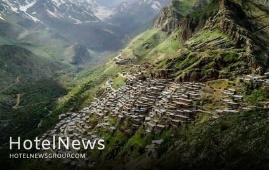
A team of archaeologists from Iran and Germany has carried out a field survey in Uramanat, an ancient rural region in western Iran, which earlier this year was named a UNESCO World Heritage. The survey was intended to shed new light on the history of Uramanat by unearthing remnants of historical monuments and relics, ISNA quoted the director of the World Heritage site as saying on Tuesday. It yielded the discovery of “several” archaeological sites and objects yet it resulted in a change in the chronological sequence of several previously-found ancient sites, Pouya Talebnia added. Moreover, several historical fortresses and their legal properties were demarcated during the survey, which was co-directed by Talebnia and Shelir Amelirad from Heidelberg University, the report said. Carried out during December and November, the survey also contributed to the enrichment of the “pottery bank” of Uramanat, Talebnia said. Stretched on the slopes of Sarvabad county, and shared between the provinces of Kordestan and Kermanshah, the rural area embraces dense and step-like rows of houses in a way that the roof of each house forms the yard of the upper one, a feature that adds to its charm and attractiveness. Last September, Hessam Mahdi, the representative of the International Council on Monuments and Sites (ICOMOS) said that he was “impressed” by the status of the rural landscape during his visit. He made the remarks on the sidelines of a visit to the western province of Kermanshah. “I am proud of being chosen to assess the case and traveling to Iran as I could visit the local people in the region.” Local officials and travel insiders believe that inscription of the property on the prestigious list of the UN body could jumpstart tourism in the region and also look at it as a tool for better conservation of its natural landscapes and unique cultural scenes for the next generations, saying its unique rural texture, architecture, lifestyle, and agriculture is a prominent example of the integration of man into nature. The Islamic Republic expects to reap a bonanza from its numerous tourist spots such as bazaars, museums, mosques, bridges, bathhouses, madrasas, mausoleums, churches, towers, and mansions, of which 26 are inscribed on the UNESCO World Heritage list. Under the 2025 Tourism Vision Plan, Iran aims to increase the number of tourist arrivals from 4.8 million in 2014 to 20 million in 2025. The latest available data show eight million tourists visited the Islamic Republic during the first ten months of the past Iranian calendar year (ended March 20).
Create: Dec 22, 2021 Edit: Dec 22, 2021 Regional News
he development of Sistan-Baluchestan through tourism can help the region address its challenges, the deputy tourism chief of the southeastern province has announced. Through the development of tourism, a peace project can be pursued with the neighboring countries in the region, CHTN quoted Mojtaba Mirhosseini as saying on Tuesday. To date, tourism activists in the province have focused on activities for the sustainable development of tourism, which is highly commendable, the official added. The port of Chabahar has the potential to become the maritime tourism capital of Iran, and also the northern region of the province has the potential to become the historical tourism capital of the country, which with the right planning and building of necessary infrastructure, can be achieved, he noted. In order to increase the demand for visiting the province, its attractions and beauty need to be presented as much as possible, he explained. SEO and web marketing are among the most effective digital marketing tools in tourism and can help introduce more people to the province and local businesses, he mentioned. He also noted that organizing fam tours for Iranian tourism activists and media people significantly changed people’s perceptions of the region. Last year, former Cultural Heritage, Tourism, and Handicrafts Minister Ali-Asghar Mounesan said that the development of the travel industry across Sistan-Baluchestan province is among the top priorities for the ministry. “I am interested in Sistan-Baluchestan, and the development of this province is a priority for this ministry and the government,” the former minister stated. “The majority of my travels during my tenure has been to Sistan-Baluchestan, which I consider as a safe province with significant values in terms of culture, history, handicrafts, and tourism.” The collective province -- Sistan in the north and Baluchestan in the south -- accounts for one of the driest regions of Iran with a slight increase in rainfall from east to west, and an obvious rise in humidity in the coastal regions. In ancient times, the region was a crossword of the Indus Valley and the Babylonian civilizations. The province possesses special significance because of being located in a strategic and transit location, especially Chabahar which is the only ocean port in Iran and the best and easiest access route of the middle Asian countries to free waters. The vast province is home to several distinctive archaeological sites and natural attractions, including two UNESCO World Heritage sites, namely Shahr-e-Soukhteh (Burnt City) and Lut desert.
Create: Dec 22, 2021 Edit: Dec 22, 2021 Regional News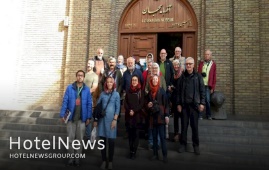
The northwestern Iranian province of East Azarbaijan plans to host a delegation of Turkish journalists and media personnel for a familiarization tour across the province in the near future, the provincial tourism chief has announced. A fam tour introducing East Azarbaijan’s tourism capabilities will be organized in cooperation with the private sector during the winter for Turkish media representatives and tourism activists, Ahmad Hamzezadeh said on Monday. A suitable platform can be provided for the development of the tourism industry by having fam tours in the province and taking advantage of the existing capacities in the sector, he explained. Holding fam tours is the best strategy for developing tourism in top countries, the official added. To accomplish this goal, the province’s tourism department is planning to organize fam tours for tourism activists and media members of the other neighboring countries early next year, he noted. Soaked in history and culture for millennia, Tabriz, which is the capital of East Azarbaijan, embraces several historical and religious sites, including the Jameh Mosque of Tabriz and Arg of Tabriz, and UNESCO-registered Tabriz Historic Bazaar Complex to name a few. The city became the capital of the Mongol Il-Khan Mahmud Gazan (1295–1304) and his successor. Timur (Tamerlane), a Turkic conqueror, took it in 1392. Some decades later the Kara Koyunlu Turkmen made it their capital, it was when the famous Blue Mosque was built in Tabriz. The city retained its administrative status under the Safavid dynasty until 1548 when Shah Tahmasp I relocated his capital westward to Qazvin. During the next two centuries, Tabriz changed hands several times between Persia and Ottoman Empire. During World War I, the city was temporarily occupied by Turkish and then Soviet troops. The ancient city was declared a world craft city of carpet weaving by the World Craft in 2016. It also bore the title of 2018 Islamic Tourism Capital.
Create: Dec 14, 2021 Edit: Dec 14, 2021 Regional News
A group of 10 Iraqi tour operators and travel agents along with their Iranian fellows are to commence a familiarization tour across the northern province of Golestan, the provincial tourism chief has announced. The group will start a four-day familiarization tour on Tuesday with the aim of getting acquainted with the province’s tourism potential as a travel destination, Ahmad Tajari said on Monday, CHTN reported. During the tour, there will be specialized meetings to exchange information and to build a stronger relationship between both sides, the official added. Both sides will also visit tourism, cultural heritage, and handicraft sites to learn more about their capabilities in these areas, he noted. The tour will also highlight the province’s strengths, including its natural, cultural, historical, handcrafts, agricultural tourism, and other assets, he mentioned. The Golestan province, with its ethnic diversity, various climate and potential in handicrafts and cultural heritage, has a very high potential for foreign tourism, and Iraq is one of its important target countries, the official explained. Last week, several Iraqi travel insiders and tour operators requested Iran to waive visa requirements for Iraqi nationals who want to enter the Islamic Republic via land borders. Earlier this year the two neighbors agreed to abolish visa requirements for air travelers. The announcement came after Iranian President Seyyed Ebrahim Raisi and Iraqi Prime Minister Mustafa al-Kadhimi met in Tehran, discussing various issues including visa waiver, a joint railway project, and increasing the level of trade. Before the coronavirus pandemic, Iraqi constituted Iran’s largest source of tourists. In return, hundreds of thousands of Iranian pilgrims head for the holy Iraqi cities of Najaf and Karbala each year to attend the Arbaeen pilgrimage, aka the Arbaeen trek, to mark an end to the 40-day mourning period following the martyrdom of Imam Hussein (AS), the grandson of Prophet Muhammad (PBUH). Golestan is reportedly embracing some 2,500 historical and natural sites, with UNESCO-registered Gonbad-e Qabus – a one-millennium-old brick tower – amongst its most famous. Narratives say the tower has influenced various subsequent designers of tomb towers and other cylindrical commemorative structures both in the region and beyond. The UNESCO comments that the tower bears testimony to the cultural exchange between Central Asian nomads and the ancient civilization of Iran.
Create: Nov 30, 2021 Edit: Nov 30, 2021 Regional News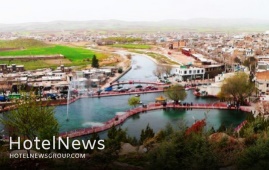
Nine tourism-related projects, which are planned to be carried out across the western province of Kermanshah are estimated to generate 135 jobs upon their completion, the provincial tourism chief has announced. The projects will be implemented in the cities of Kermanshah, Javanrud, Harsin, and Islamabad-e-Gharb, Jabbar Gohari said on Tuesday. A budget of 2.4 trillion rials ($58.4 million at the official exchange rate of 42,000 rials per dollar) will be channeled into the projects, which include accommodation centers, tourist complexes, traditional restaurants, and hotel hospitals, the official explained. Kermanshah embraces a variety of awe-inspiring historical sites, of which Bisotun and Taq-e Bostan are both on the UNESCO World Heritage list. Inscribed into the base of a towering cliff, Taq-e Bostan comprises extraordinary Sassanian bas-reliefs of ancient victorious kings divide opinions. Late afternoon is the best time to visit, as the cliff turns a brilliant orange in the setting sun, which then dies poetically on the far side of the duck pond. Bisotun is a patchwork of immense yet impressive life-size carvings depicting King Darius I and several other figures. UNESCO has it that Bisotun bears outstanding testimony to the important interchange of human values on the development of monumental art and writing, reflecting ancient traditions in monumental bas-reliefs.
Create: Nov 20, 2021 Edit: Nov 20, 2021 Regional News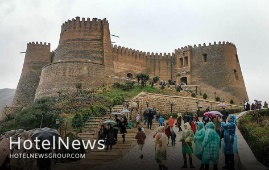
The construction of a fence wall has been completed around Falak-ol-Aflak fortress, an imposing monument of Sassanids, which dominates the capital city of Khorramabad in western Iran. “The wall has been constructed based on the original model and historical documents,” Lorestan province’s tourism chief said on Sunday. “Moreover, traditional materials have been used in the recent construction that has harmony with the fortress.” The unmissable eight-towered monument seems particularly dramatic when floodlit at night, offering picturesque views of its encircling crenelated battlements. Lorestan is a region of raw beauty that an avid nature lover could spend weeks exploring. The region was inhabited by Iranian Indo-European peoples, including the Medes, c. 1000 BC. Cimmerians and Scythians intermittently ruled the region from about 700 to 625 BC. One of the most prominent archaeological findings of the fertile region is the ancient “Luristan Bronzes”, which are noted for their eclectic array of Assyrian, Babylonian, and Iranian artistic motifs. Lorestan was incorporated into the growing Achaemenid Empire in about 540 BC and successively was part of the Seleucid, Parthian, and Sassanid dynasties.
Create: Nov 15, 2021 Edit: Nov 15, 2021 Regional News
Iran must rebuild trust with the global tourism market, the Head of the Iranian Tour Operators said on Sunday. The level of Iran’s health security and vaccination against coronavirus should be advertised internationally to gain further trust from the global tourism market, Ebrahim Pourfaraj said. The health and safety level in Iran is a concern for foreign tourists, he noted, ISNA reported. It is the responsibility of the Ministry of Foreign Affairs, embassies, economic and cultural attaches, and ministries of health and tourism to inform the world about Iran’s [great achievements in] public vaccinations, the official added. During the pandemic, Iran has maintained contact with global tourism markets and companies that worked with the country in the past, especially since virtual communication and meetings have been held, he mentioned. “Following the resumption of the tourist visa, visitors from Russia and France have traveled to Iran and we are currently expecting a smaller number of tourists in Iran due to the current situation in the world,” he explained. There is, however, speculation that in the spring of 2022, the next high season of travel to Iran, the number of tourists and trips will increase, he added. In January, the official announced that international tourism flow to Iran will return to normal in 2022. Although there are requests for traveling to Iran in the current year (2021), most travel agencies and tour operators believe that the flow will go back to normal in the next year, he said. Beginning mass vaccination against the coronavirus will provide better and safe conditions for international travels in 2022, he added. Last November, the World Tourism Organization announced that international tourist arrivals to Iran plunged 72% during the first eight months of 2020 when compared to 2019, highlighting the severe impact of COVID-19 as the main factor. Some experts believe Iran is still somehow “unknown” for many potential travelers due to Western “media war”. The ancient land is potentially a booming destination for travelers seeking cultural attractions, breathtaking sceneries, and numerous UNESCO-registered sites. Under the 2025 Tourism Vision Plan, Iran aims to increase the number of tourist arrivals from 4.8 million in 2014 to 20 million in 2025.
Create: Nov 15, 2021 Edit: Nov 15, 2021 Regional News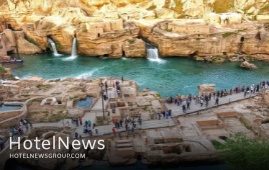
The UNESCO-registered Shushtar Historical Hydraulic System has been closed to visitors amid safety concerns after its western side was announced to be “unstable”. “Shushtar Historical Hydraulic System was closed to the public until further notice due to the unstable conditions of the western wall,” Mehr reported on Sunday. “Cultural heritage experts have warned for years about the instability of this part of the World Heritage,” the report said. Earlier in October, a local official announced that leakage of the site, which is known globally as a masterpiece of creative genius, is an immediate concern and needs to be restored. “To prevent water leakage in the historical structure, which could result in its destruction, short-term measures are taken,” the official said, Mehr reported. Studies and research are being conducted and meetings with consulting engineers are underway to find a way to cause the least damage to this ensemble, the official added. The ancient hydraulic system comprises bridges, weirs, tunnels, canals, and a series of ancient watermills powered by human-made waterfalls. It is named after an ancient city of the same name with its history dating back to the time of Darius the Great, the Achaemenid king. Inscribed on the UNESCO World Heritage list in 2009, the Shushtar Historical Hydraulic System may testify to the heritage and the synthesis of earlier Elamite and Mesopotamian knowhow. According to UNESCO, the ensemble was probably influenced by the Petra dam and tunnel and by Roman civil engineering. The property is as rich in its diversity of civil engineering structures and its constructions as in the diversity of its uses (urban water supply, mills, irrigation, river transport, and defensive system). The Shushtar Historical Hydraulic System testifies to the heritage and the synthesis of earlier Elamite and Mesopotamian knowhow; it was probably influenced by the Petra dam and tunnel and by Roman civil engineering. “The hydraulic system has been considered a Wonder of the World not only by the Persians but also by the Arab-Muslims at the peak of their civilization,” according to the UN cultural body. Furthermore, one of its main canals is a veritable artificial watercourse that made possible the construction of a new town and the irrigation of a vast plain, at the time semi-desert. UNESCO says that the Shushtar Historical Hydraulic System demonstrates outstanding universal value as in its present form, it dates from the 3rd century CE, probably on older bases from the 5th century BC. It is complete, with numerous functions, and large-scale, making it exceptional.
Create: Nov 15, 2021 Edit: Nov 15, 2021 Regional News
Home to one of the world’s oldest continuous major civilizations, with historical and urban settlements dating back to 7000 BC, Iran seeks to attract more foreign travelers, and in particular, vacationers from China. Iran’s deputy tourism minister on Wednesday stressed the need for all-inclusive fault detection, and identification of effective factors to expand tourism ties with China in a meeting with travel experts from the state-run institutes and the private sector. We should pay attention to the Chinese market in a more pragmatic approach,” Ali-Asghar Shalbafian said in the follow-up session held to formulate new strategies to expand tourism cooperation between the two ancient countries. So far, steps have been taken to examine the Chinese tourism market, but today the (essential) need is to implement executive measures based on [our] fault detection and macro planning,” the official noted. Insignificant numbers of Chinese restaurants, Chinese-language guides, or even inappropriate lodging facilities are deemed to be among the main reasons why Chinese arrivals in Iran fall short of expectations. Some experts believe that part of this failure comes from inside Iran because Chinese restaurants are scanty across the country while the cuisine is of high importance for the majority of the Chinese people. Moreover, Chinese travelers need fluent Chinese-language tour guides whose numbers are limited in the Islamic Republic. Last year, Tehran’s ex-ambassador to Beijing said Iran was seeking to become a tourist destination for millions of potential travelers from China as the two countries are working on a 25-year comprehensive cooperation plan that includes boosting relations in the field of tourism. Speaking in the TV program, Mehdi Safari reminded some 200 million Chinese tourists to visit different countries annually, adding “according to this agreement Iran will become one of the tourist destinations for Chinese travelers so that Iran can attract one to two million Chinese tourists to the country.” This will create a transformation in Iran’s tourism industry and will create jobs and a large market for the handicrafts industry of the country,” he expanded. In 2019, the Islamic Republic waived the visa requirement for Chinese nationals willing to visit the country. The decision was made to attract more foreign tourists to the country; however, it was a unilateral measure, because Iranian tourists visiting China still need visas. Under the 2025 Tourism Vision Plan, Iran is expecting to increase the number of tourism arrivals from 4.8 million in 2014 to 20 million by 2025.
Create: Nov 9, 2021 Edit: Nov 9, 2021 Regional News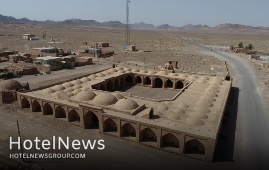
Three Qajar-era (1789-1925) caravanserais in Tabas, eastern South Khorasan province, have recently been demarcated help their legal boundaries and properties, a local tourism official has said. “New boundaries have been defined for Khan, Chehel Payeh, and Deh-e Mohammad caravanserais in a bid to curb illegal constructions within their boundaries,” Parisa Jamshidi announced on Sunday. The caravanserais, which are among the candidates for a collective inclusion in UNESCO’S cultural heritage list, has been recently restored, the official noted. Over 70 billion rials ($1.7 million at the official exchange rate of 42,000 rials per dollar) has been invested in the restoration projects of the historical inns so far, she added. Caravansary (also Caravanserai or Caravansaray) is a building that served as the inn of the Orient, providing accommodation for commercial, pilgrim, postal, and especially official travelers. According to Encyclopedia Iranica, from the number of surviving caravansaries and their sizes, it is clear that in Safavid and Qajar times there was a state architectural department that was specifically concerned with the construction of caravansaries and stations on the overland routes. Furthermore, in the cities, several caravansaries were erected as lodging houses, depots, and commercial offices in the vicinity of the bazaars. A typical caravansary consists of a square or rectangular plan centered around a courtyard with only one entrance and arrangements for defense if necessary. Whether fortified or not, it at least provided security against beasts of prey and attacks by brigands. Iran’s earliest caravanserais were built during the Achaemenid era (550 -330 BC). Centuries later, when Shah Abbas I assumed power from 1588 – to 1629, he ordered the construction of network caravanserais across the country. Such roadside inns were originally built in various epochs along ancient caravan routes in the Muslim world to shelter people, their goods, and animals. The former Silk Roads may be the most famous example dotted by caravanserais.
Create: Nov 3, 2021 Edit: Nov 3, 2021 Regional News
